Part of a series of articles titled Managing Resilient Forests Initiative for Eastern National Parks.
Article
Resilient Forests Initiative - Managing Deer Impacts
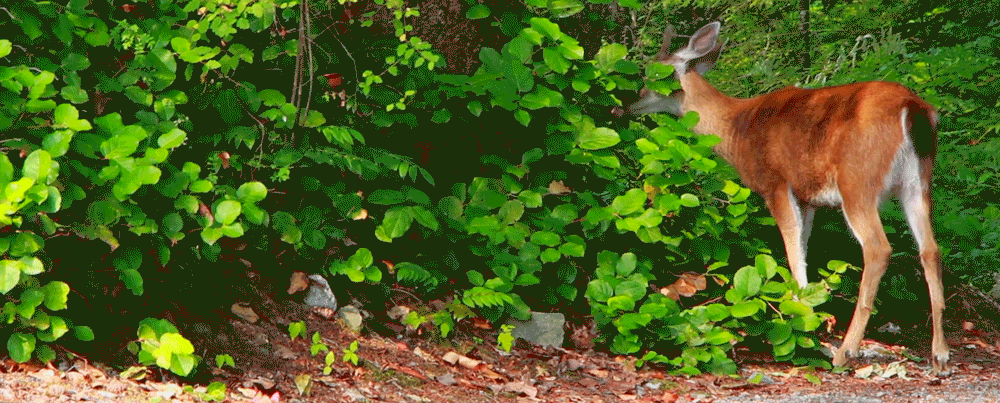
Keeping white-tailed deer in balance with forest ecosystems is critical to managing resilient forests.
Deer love living on the edge, and people love giving an edge - not purposefully, necessarily, to deer. The places where a yard, field, or farm meets the forest are referred to in ecologist parlance as “edge habitat”, and the countryside of the eastern US is awash with this ecological zone that deer so often thrive in. Add to that the absence of “top line” predators (wolves and mountain lions), conditions have conspired to allow the deer population to explode over the past several decades.
Too Many Deer
A healthy forest needs to have enough tree seedlings and saplings to regenerate the forest canopy after a disturbance. Analysis of NPS Inventory and Monitoring (I&M) and other long-term datasets makes it clear that many eastern national parks lack adequate tree regeneration due to decades of over browsing by white-tailed deer. Most of their preferred foods, logically, are native plant and tree species that they have evolved with over the millennia. This higher “deer herbivory” pressure on mostly native plants helps many non-native invasive species flourish in high deer-density areas.
NPS image
Forest health monitoring by I&M Networks provides information on the status of park forest regeneration. Tracking intensity of deer browse impacts and the number and species of seedlings and saplings can predict whether a park’s forest is capable of regenerating after disturbances. As the map below shows, many eastern park’s forest regeneration is in either Imminent Failure or Probable Failure, meaning that park forests will eventually shift to shrub thickets over time without management intervention. First and foremost, managing deer will be essential for tree seedlings and saplings to begin to recover.
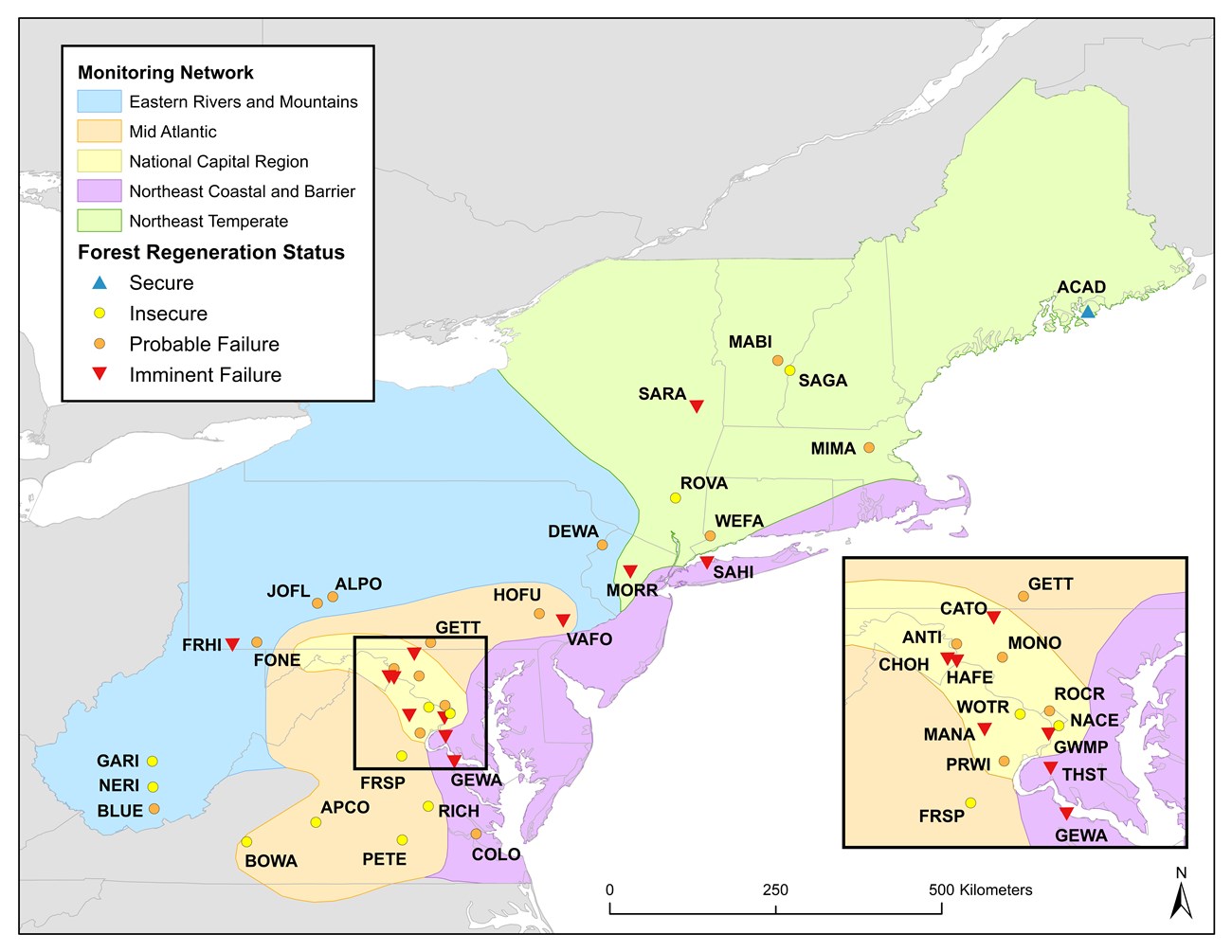
Through collaboration within Region 1, parks can establish and implement deer management programs by building on the lessons learned at their neighboring parks. National park units, such as Catoctin Mountain Park and Rock Creek Park, that manage deer have seen positive trends in tree regeneration.
As deer populations in these parks have declined, seedling numbers have concurrently increased. While increases in seedlings are a positive change, they don’t guarantee future regeneration outright. It takes many years for these small and vulnerable seedlings to grow into large, resilient saplings on their quest to reach the canopy, and they face many threats to their survival along the way.
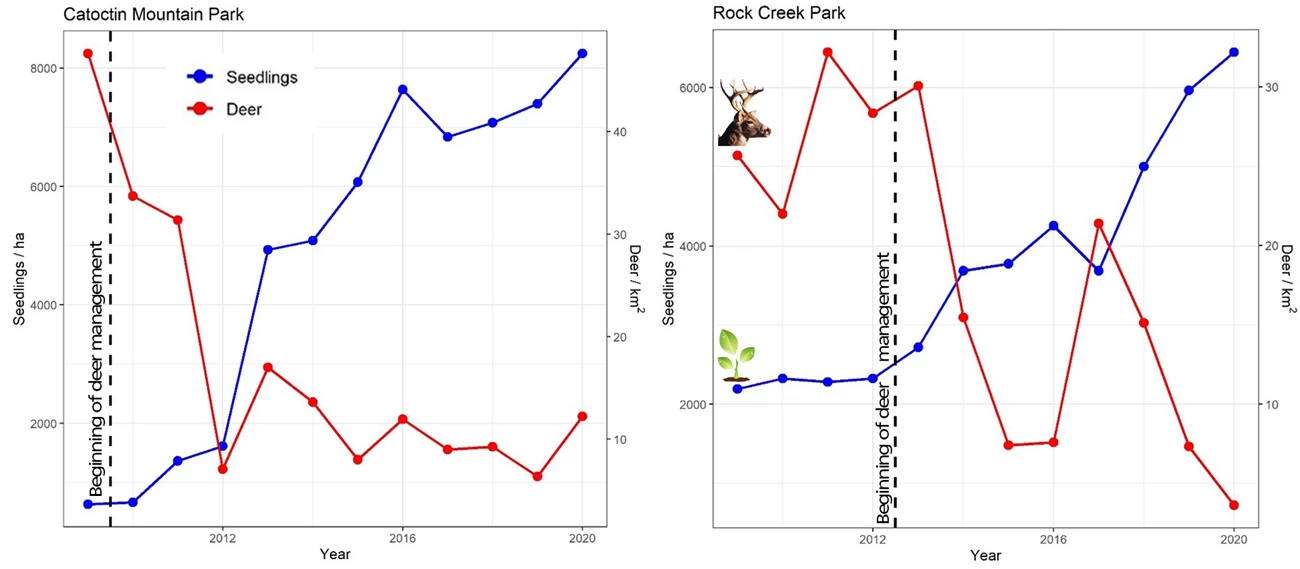
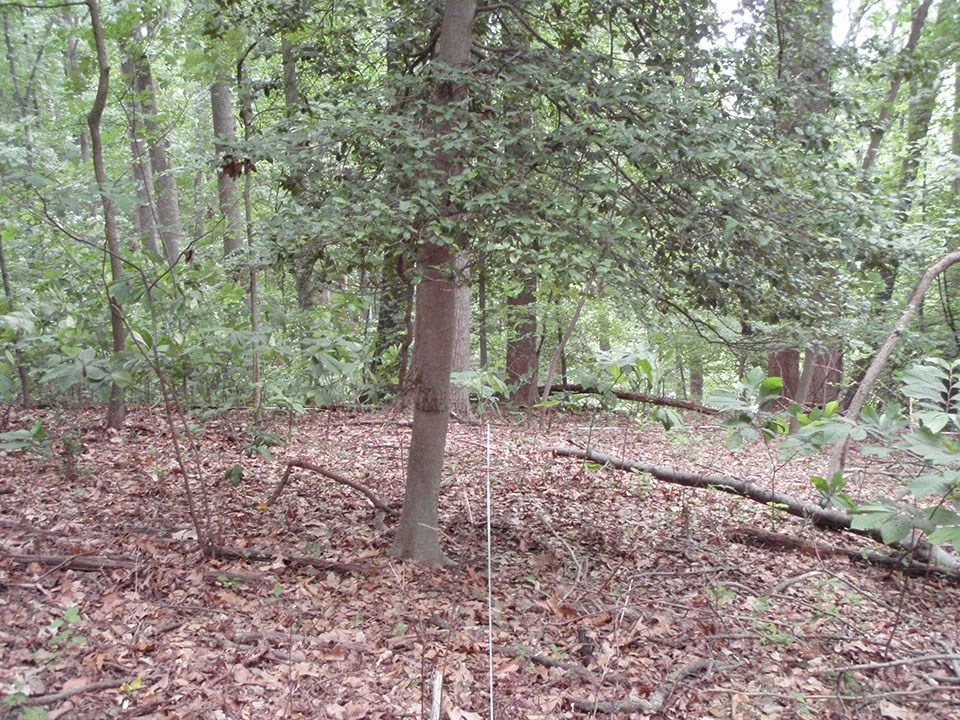
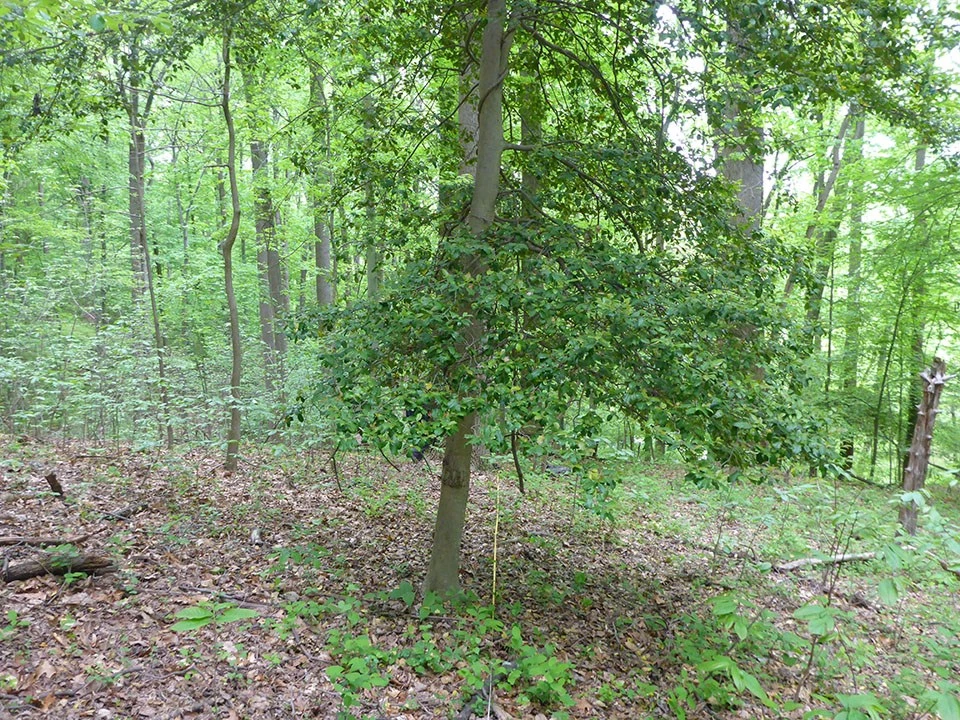
Left image
Very little regeneration of trees and plants occurred on the forest floor before deer management began in Rock Creek Park.
Credit: NPS image
Right image
Forest regeneration has recovered dramatically since an on-going deer management plan was implemented.
Credit: NPS image
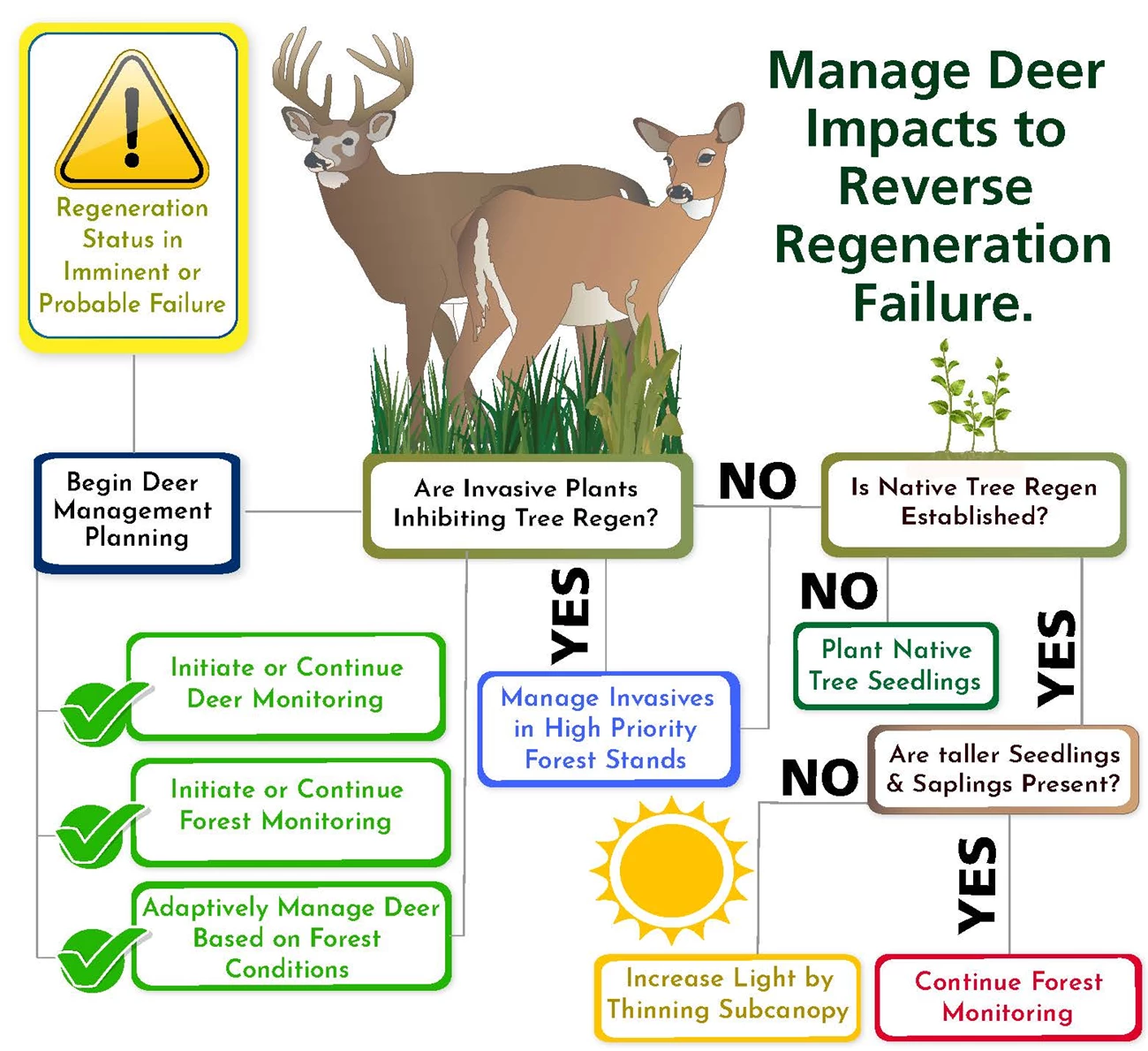
In the video below, see how Eastern national parks have had successes maintaining healthy forests through deer management and other tools.
- Duration:
- 5 minutes, 54 seconds
How forest monitoring in eastern national parks helped reveal issues with long-term forest sustainability, and the successes parks have had in addressing the issue at Gettysburg National Military Park, Rock Creek Park, and Catoctin Mountain Park.
For more information
Explore this Case Studies in Deer Management StoryMapContact NPS Wildlife Biologist/T&E Coordinator Sheila Colwell for further details on regional deer management.
Tags
- antietam national battlefield
- catoctin mountain park
- chesapeake & ohio canal national historical park
- colonial national historical park
- eleanor roosevelt national historic site
- flight 93 national memorial
- fredericksburg & spotsylvania national military park
- friendship hill national historic site
- george washington memorial parkway
- gettysburg national military park
- harpers ferry national historical park
- home of franklin d roosevelt national historic site
- hopewell furnace national historic site
- manassas national battlefield park
- minute man national historical park
- monocacy national battlefield
- morristown national historical park
- national capital parks-east
- prince william forest park
- richmond national battlefield park
- rock creek park
- sagamore hill national historic site
- saratoga national historical park
- thomas stone national historic site
- valley forge national historical park
- weir farm national historical park
- wolf trap national park for the performing arts
- invasive plant management
- resilient forest management
- white tailed deer
- deer management plan
- deer management
- ermn
- vegetation
- midn
- mid-atlantic network
- eastern rivers and mountains network
- ncbn
- northeast coastal and barrier network
- ncrn
- national capital region network
- resilient forests initiative
Last updated: August 20, 2024
